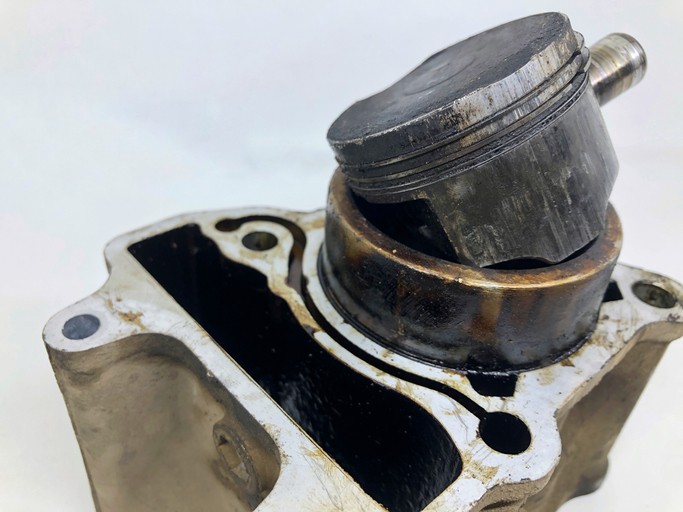Maintaining the correct engine coolant temperature is crucial for the health and longevity of your vehicle. Several factors can influence your engine’s coolant temperature, including engine workload, weather conditions, and the condition of your cooling system. Regularly checking your engine’s temperature gauge is vital to ensure it stays within the normal operating range. But just How Hot Does Antifreeze Get, and why is this so important?
Normal Coolant Temperature Range
Typically, normal coolant temperature ranges from 195 to 220 degrees Fahrenheit (approximately 90 to 104 degrees Celsius). If your engine temperature gauge ever creeps into the red zone, it’s imperative to stop your car immediately. Continuing to drive with an overheating engine can lead to severe and costly damage. Anything outside the normal range can indicate potential issues within your cooling system or engine.
The Dangers of High Coolant Temperature
While your car might still run when the coolant temperature is excessively high, you’re likely causing significant internal engine damage. Ignoring high coolant temperatures can lead to a cascade of problems, including:
- Fuel Combustion Issues: Overheating can cause engine knocking or pinging. This occurs when the fuel ignites prematurely in the combustion chamber, disrupting the smooth operation of the engine.
- Increased Fuel Consumption: An overheated engine has to work harder to maintain performance. This increased strain results in higher fuel consumption, making your vehicle less fuel-efficient.
- Piston Damage: Extreme heat can cause damage to the pistons. Pistons are critical engine components, and damage can lead to expensive repairs or even engine replacement.
- Head Gasket Failure: Prolonged exposure to high temperatures can cause the head gasket to fail. This critical seal between the engine block and cylinder head can rupture, leading to coolant leaks and further engine damage. Engine heads can also crack or warp under extreme heat.
Alt text: Damaged piston with visible wear and tear, highlighting engine piston damage caused by overheating.
If you experience head gasket or engine block damage due to overheating, consider using a product like K-Seal to help repair leaks and potentially save on costly mechanic bills.
Problems Associated with Low Coolant Temperature
While overheating is a well-known danger, coolant temperatures that are too low can also create problems for your engine:
- Reduced Engine Efficiency: Engines are engineered to operate most efficiently within a specific temperature range. When the coolant temperature is too low, the engine doesn’t reach its optimal operating temperature. This can lead to decreased engine efficiency and performance.
- Increased Fuel Consumption: A colder engine requires a richer fuel mixture to run correctly. Fuel doesn’t vaporize as effectively in a cold engine, resulting in incomplete combustion and increased fuel usage.
- Increased Emissions: Inefficient combustion in cold engines leads to higher emissions. This means more harmful pollutants are released into the environment as the engine struggles to operate cleanly.
- Poor Heater Performance: Your car’s heater relies on hot coolant to warm the air circulated into the cabin. If the coolant is too cold, the heater will be ineffective, resulting in a cold and uncomfortable driving experience, especially in winter.
- Engine Freeze: In extremely cold climates, if the coolant temperature is too low, there’s a risk of the radiator and engine coolant freezing. This can prevent the car from starting and potentially cause significant engine damage due to expansion of frozen fluids.
Checking Your Engine Coolant Temperature
Monitoring your engine coolant temperature is usually straightforward thanks to modern car dashboards. The temperature gauge on your dashboard provides a general indication of whether your engine is running too hot or too cold.
Alt text: Dashboard engine temperature gauge with warning light illuminated, signaling engine overheating.
For vehicles manufactured after 1996, electronic temperature gauges are common. These can be checked more precisely using a diagnostic device. You can purchase a diagnostic tool for personal use or have a mechanic verify the gauge readings to ensure accuracy.
In addition to dashboard gauges, modern vehicles are equipped with an engine coolant temperature sensor. This sensor works in conjunction with the engine control unit (ECU) to manage fuel injection and ignition timing. If the sensor detects a high coolant temperature, the ECU adjusts ignition timing, fuel mixture, and activates the cooling fan to regulate the temperature.
How K-Seal Can Help Manage Coolant Temperature Issues
If you suspect a coolant leak is contributing to temperature fluctuations, consider using K-Seal Coolant Leak Repair. K-Seal products are designed to seal leaks in the cooling system effectively. For general leaks, K-Seal Coolant Leak Repair is suitable, while K-Seal Ultimate is formulated for more serious issues like head gasket and engine block leaks.
By addressing coolant leaks and maintaining a sealed cooling system, K-Seal helps ensure your coolant temperature returns to and remains within the normal operating range. Always keep a close watch on your temperature gauge to ensure your engine operates within its optimal temperature window.
Maintaining the correct engine coolant temperature is vital for optimal engine performance, better fuel economy, and extending the lifespan of your vehicle.
